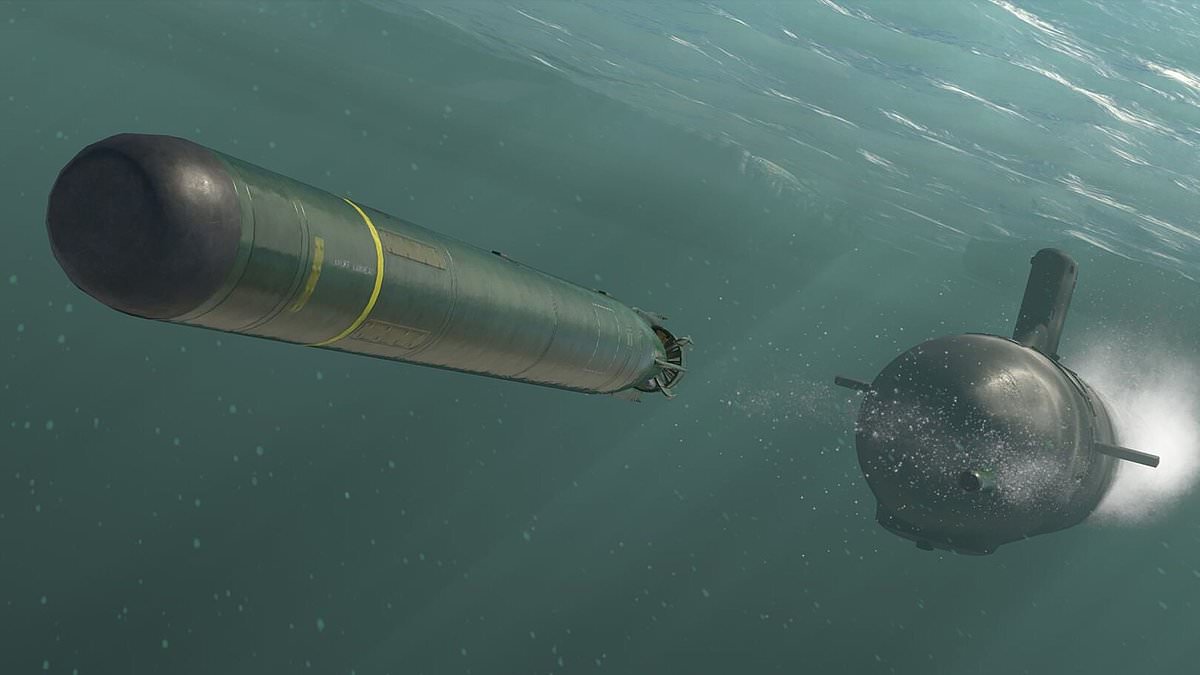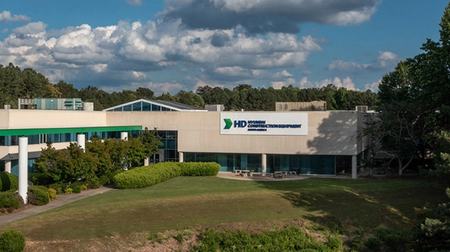Copyright dailymail

Hundreds of thousands of Britons fleeing for their lives as a 1,600ft tsunami crashes across our shores. Countless men, women and children killed instantly. Buildings flattened and submerged and roads, bridges and power grids destroyed. Inland, people trample over each other as they run for high points, even clambering up buildings and lamp posts to escape the wave of death. Yet the survivors arguably face an even worse fate than the deceased, because there is one major difference between this disaster and the Indonesian tsunami of 2004 and the Japanese tidal wave of 2011. This time, the water is radioactive. This 'nuclear wave' transforms coastal cities into barren wastelands. The radiation splashed on to people's bodies is lethal to anyone who survives drowning, while the toxic water turns the coast into a sterile desert as it recedes. This terrifying prospect is now more possible than ever after Vladimir Putin unveiled a new nuclear submarine, Khabarovsk – named after Russian explorer Yerofey Khabarov – tipped with new Poseidon missiles, each of which is 100 times more powerful than the atomic bomb dropped on Hiroshima in 1945. The vessel was seen by the world for the first time last Saturday, just days after the Kremlin announced its missiles, each equipped to carry a nuclear warhead, had been successfully tested. Satellite images, taken on November 2, emerged this week showing the location of the submarine at a shipyard in Severodvinsk, a port on the shores of the White Sea in Russia's far north. 'There is nothing like this in the world in terms of the speed and the depth of the movement of this vehicle – and it is unlikely there ever will be,' Putin gloated, adding that there were 'no ways to intercept' it. The Russian president boasted that each missile had 'unrivalled advantages', while the sub's nuclear reactor would take just 'minutes or seconds' to start. Originally called Project 09851, the contract to build the Khabarovsk was signed in 2012. Construction of the colossus began two years later at shipbuilder Sevmash in Severodvinsk. But the project only became known to the international community in 2018, when Putin announced six new nuclear weapons programmes, including the Poseidon missiles, in his annual state-of-the-nation address. The Khabarovsk was due to be launched in June 2020. Although no official reasons were given for the delay, reports have suggested work was held up by technical difficulties, the Covid pandemic and the start of the Ukraine war in 2022. Many details of this behemoth have been shrouded in secrecy, but the submarine measures 370ft long and has an operational depth of up to 3,300ft. It is estimated to have cost well in excess of £1billion. Russian media have reported that the sub will have a maximum underwater speed of up to 100 knots (equivalent to 120mph), compared to the UK's Vanguard Class submarine that can currently travel at only 25 knots, equivalent to 30mph. Shipping industry experts say the sub will be manned by a crew of around 100, have a virtually unlimited firing range and remain submerged for months without surfacing. The design is said to incorporate stealth technology, making both the sub and its missiles extremely difficult to detect. This technology includes radar-absorbent materials (RAM) to prevent hostile radio waves from bouncing back to enemy transmitters and revealing the sub's location. Meanwhile, it is understood that Poseidon's pump-jet propulsion system mimics the noise of civilian ships, to conceal its deadly purpose, while its missiles are designed with curves and angles to deflect radio signals. The hulking craft, which weighs 10,000 tons, has been commissioned to transport up to six new 78ft Poseidon missiles, each said to be capable of triggering a radioactive tsunami. Unlike traditional attack submarines, which have a variety of roles, the Khabarovsk has been designed solely to carry these missiles – although it is also believed to be kitted out with standard torpedoes. Just one Poseidon missile could cause enough damage to 'plunge Britain into the depths of the sea', according to a chilling report on Russian television. Andrey Kartapolov – chair of Russia's Duma defence committee – has gone further and said the weapon is 'capable of wiping out whole coastal nations'. While the Poseidon is launched from the Khabarovsk like a normal missile, once it has been dispatched it is believed to have the capability to pause in the sea and 'loiter', as one observer has described it, as an underwater drone before being directed to unleash its nuclear warhead. One scientist says: 'The technology involved here is extremely sophisticated, but the aim is very basic indeed. 'The function of Poseidon is to cause massive explosions under the surface of the water that will result in cities and other key targets being drenched with radioactive seawater and, as a result, being largely uninhabitable.' Speaking to the Daily Mail, Admiral Lord West – who served as First Sea Lord and Chief of the Naval Staff – says: 'It's extraordinary that Putin is developing a weapon like this – it's extremely concerning and shows what a maverick he is. 'It's a Doomsday weapon and is primarily aimed at travelling across the Pacific to hit the American West Coast.' Lord West, whose career also included a stint as Britain's Chief of Defence Intelligence, said he wasn't 'over-fussed' by the threat to Britain by Putin's latest move. But he adds: 'I'm fussed that he's actually developing it. I'm fussed that he thinks it's clever. Hopefully he won't use it because he knows the deterrent works. What should happen if he fires this thing is that both he and Moscow will disappear in a puff of smoke [as the West retaliates]. That's why we have a deterrent force. 'But, of course, one never wants that to happen. Hopefully Putin is not so maverick and so stupid that he thinks he can use a weapon like this and that no one will react to him.' International opinion is divided on how effective this Doomsday missile will be – if ever put to use. Pavel Podvig, an expert on Russia's nuclear capability, has said leaders of the former Soviet Union 'studied the idea of using tsunami-like waves to destroy coastal facilities several times', adding: 'Each study concluded that it won't work.' Michael B. Petersen, of the US-based Centre for Naval Analyses, says the weapon principally functions as a warning. 'Rather than serve as a war-fighting function, it's designed to force an adversary to back down in the face of threats to use it,' he says. It is only ever likely to be actually deployed, Petersen adds, as a 'second-strike' retaliation after a nuclear war has already begun. Indeed, if the latest reports that Putin is amassing attack submarines with nuclear weapons in the Arctic Circle in preparation for war with Nato are to be believed, then the Khabarovsk could soon be prowling an ocean near you. 'We're talking about a massive, megaton-sized thermonuclear weapon designed to produce significant, long-lasting radiation effects,' Jeffrey Lewis, a scholar at the Middlebury Institute of International Studies explains. 'It's downright terrifying.



